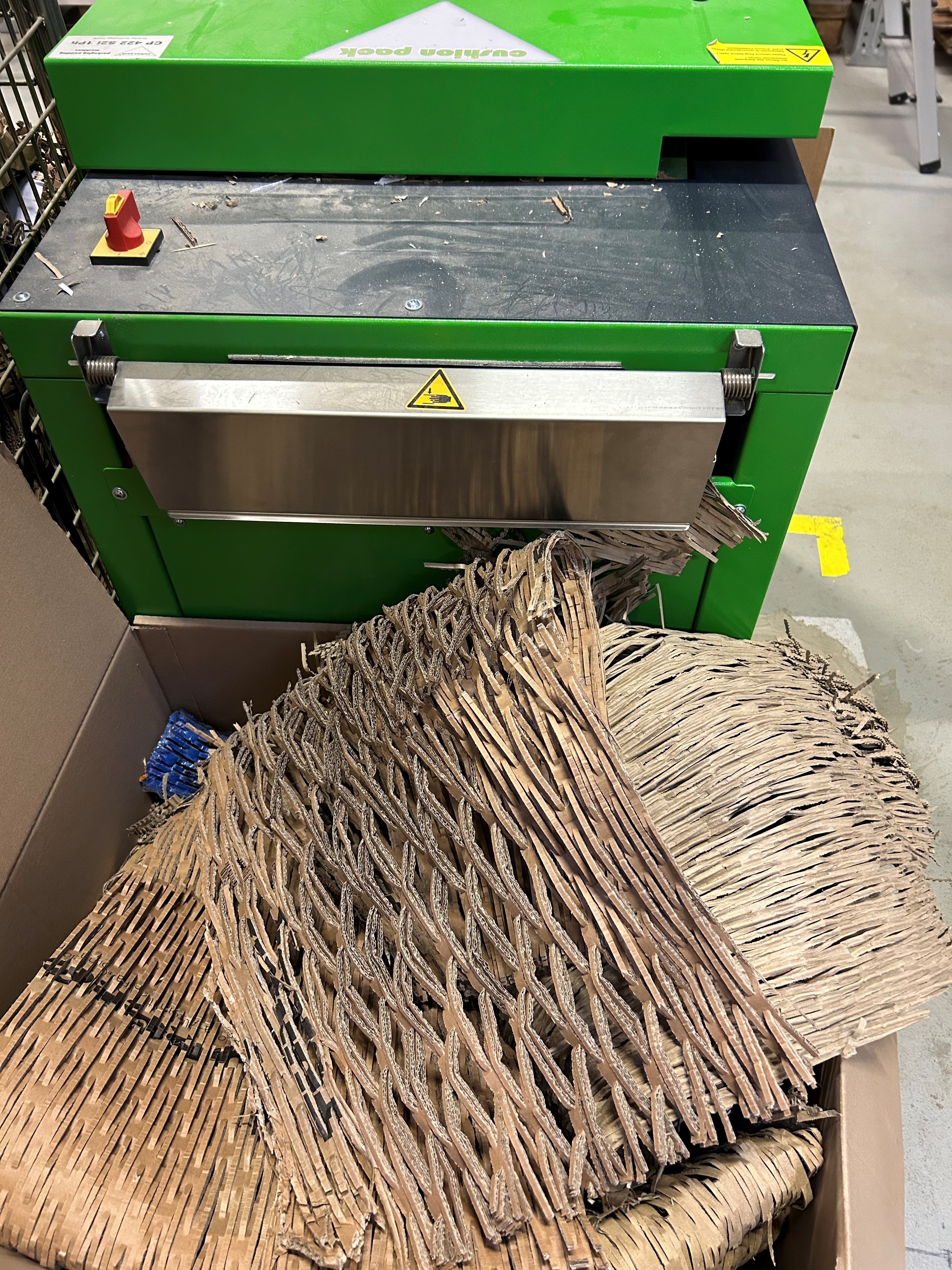Self-Produced Box Filler for the Environment and the Economy

With a constant search for more environmentally friendly solutions, Hans Følsgaard A/S has gradually changed the way shipments, waste, and by-products are handled. It has succeeded in implementing a critical mindset when it comes to resource consumption in the many daily shipments.
All employees are aware of resource consumption, both in product development and packaging methods. It's not just about the potential of the product itself, but also the logic in material selection, packing, etc.
The most noticeable results have occurred in the warehouse, where, among other things, the amount of small combustible waste has been significantly reduced as a result of better sorting and alternative packaging products.
Common Sense Without Overpacking
With a general focus on less environmentally damaging solutions, there are, in most areas, alternatives to the way things were done yesterday. And if the solution does not exist, the best alternative must be chosen. For example, the stretch wrapping that pallets are wrapped in is now half the thickness in cases where it is strong enough.
Alternatives to plastic film would be interesting, but until those solutions become available, one must work with the existing solutions. Here, the solution is thus to reduce the amount of plastic by avoiding overpacking.
In fact, Følsgaard tried a type of wrapping made from, among other things, sugarcane. However, it turned out that transportation made the product environmentally unsustainable. Therefore, it was discarded in favor of a thinner traditional wrapping.
Water-Based Ink and Paper Tape
When cardboard boxes from Følsgaard are to be reused, it is no different than for any other cardboard box. The difference lies in the ink and the tape used to seal the boxes. The ink on the cardboard box is water-based and does not harm the environment. The tape is made of paper with environmentally friendly glue. As the warehouse manager says: "We need to be able to reuse it!"
Følsgaard's certified cardboard boxes consist of 80% recycled paper. This is the optimal mix ratio, as a higher proportion of recycled content would compromise the box's durability. "When you recycle paper, the paper is dissolved in water and the fibers in the paper become shorter. The consequence of this is that you have to add new, long wood fibers, which can then hold the paper together. Therefore, it is not advisable to use more than 80% recycled paper in the cardboard boxes. "If solutions are developed where an even larger proportion can be recycled, or where alternative solutions make sense, then we are always attentive to it," says Jan Vestergaard.

An Investment in Self-Produced Box Filler
One of the larger initiatives at Følsgaard's warehouse is an industrial cardboard shredder that can turn paper scraps and used cardboard boxes into box filler. This way, one avoids purchasing, for example, plastic fill, which is both expensive and has an unnecessarily large environmental impact. The shredder may seem like a big investment, but it has a surprisingly short repayment period, relative to the cost of buying box filler. It thus makes sense both economically and environmentally.
A Continuous Process
Our effort to reduce resource consumption is an ongoing process, and we commit to continuously seeking new ways to improve our sustainability profile. We recognize that it takes a collective effort to achieve significant environmental improvements, but we have succeeded in making environmental considerations mandatory when we think about logistics and business in general.
Read more about our Focus and Goals within sustainability here.
